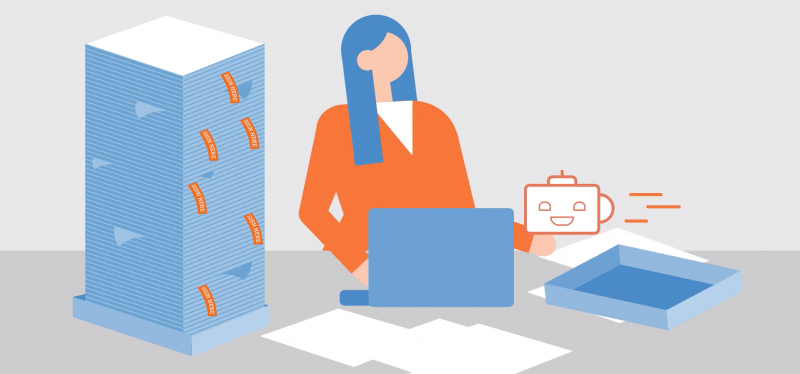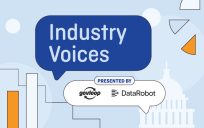Robotic process automation (RPA) is one of the highest return-on-investment technologies for agencies to acquire. Not only does it increase employees’ productivity, but the effects of RPA ripple outwards as well – into cost savings, bigger mission gains and employee recruitment and retention.
Let’s examine how RPA actually works with an example.
Think about your last time starting a job. At least the first day – but usually much longer – is spent onboarding. Oftentimes, new hires need to complete a series of HR trainings or baseline knowledge checks: for security, office rules and technology.
The trainings require a certain score to pass, but HR also wants to see areas of strength and weakness for individuals and larger departments. To do this, however, they have to log into a system, collect each person’s overall score and log it into a larger document. If they wanted a better picture, they’d have to check each person’s answers to specific questions – going one by one.
This process is incredibly tedious and strenuous for HR personnel. It’s also the perfect place for RPA to step in.
RPA software is installed onto computers or virtual environments. Like any software, RPA has a programmed-in set of instructions for the computer to perform.
The software executes a set of instructions or rules directing it where to go in systems, what actions to perform and how to operate in different scenarios. Each RPA program is called a bot, and the bots can work separately or together across different environments.
So for new hires, developers could program the RPA bot to specifically take care of all of the logging and information collection activities that HR employees had previously handled.
The instructions would tell an RPA bot to go into the system that contained the results of new hires’ evaluations. The bot would then receive security credentials – just like a person would – to access all of the necessary information and systems, before beginning its duties.
The bot could quickly retrieve information for each individual and even go further to access information about specific answers. Then, based on the instructions, the RPA bot would log and sort this information in a spreadsheet or file. The bot could even send out an email once the process was finished, handing off the important results to an actual person in HR. Staff would then have the information available to glean real insights from the process.
Bots offer a myriad of benefits to agencies. First, bots operate at a rapid pace, helping to reduce process times and freeing up time for employees to do important work. If the task was going digitally door to door – or portal to portal – bots would be traveling in hyperspeed. Information collection or repetitive processing that would take a person hours of work can be finished in minutes by a bot.
Bots also are 100% precise following the instructions. As they’re directed by rules, bots will never deviate from the values that they’re dealing with. In other words, there’s no such thing as a typo when it comes to bots, since they don’t have decision-making skills or strategies themselves. They just follow instructions. Bots can also work either attended or unattended. Attended bots turn on when users hit the power button, while unattended bots operate 24/7, 365 days a year.
One benefit for employees is that bots are saving hours of work. Employees are also receiving more accurate documents and data to use in their decision-making.
This article is part of GovLoop’s recent course created in partnership with UiPath, “Implementing Automation to Eliminate Manual and Repetitive Work.” Access the full course here.





Thanks for helping us all get smart on RPA!